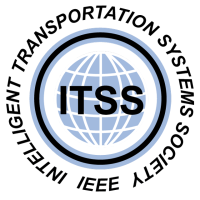Sightseeing in Pisa
Pisa is a university city in Tuscany, with a population of about 90 000 and over 40 000 students. It is close to the coast, just 80 km from Florence, 15 km from Lucca and 150 km from Siena. The ancient centre of Pisa is roughly in the shape of a square surrounded by 12th-century walls, with sides measuring 1.5 km. The Arno river crosses the city from east to west, cutting it into two parts named Tramontana (north) and Mezzogiorno (south).
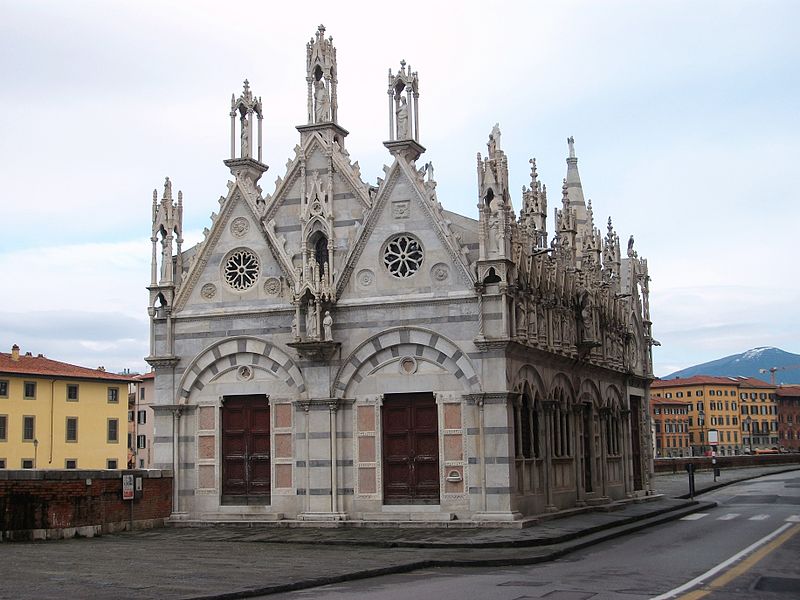
Santa Maria della Spina Church in Pisa
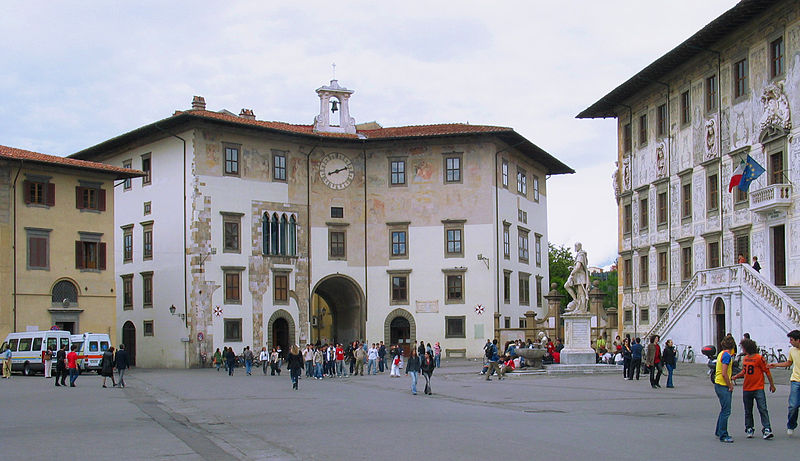
Piazza dei Cavalieri
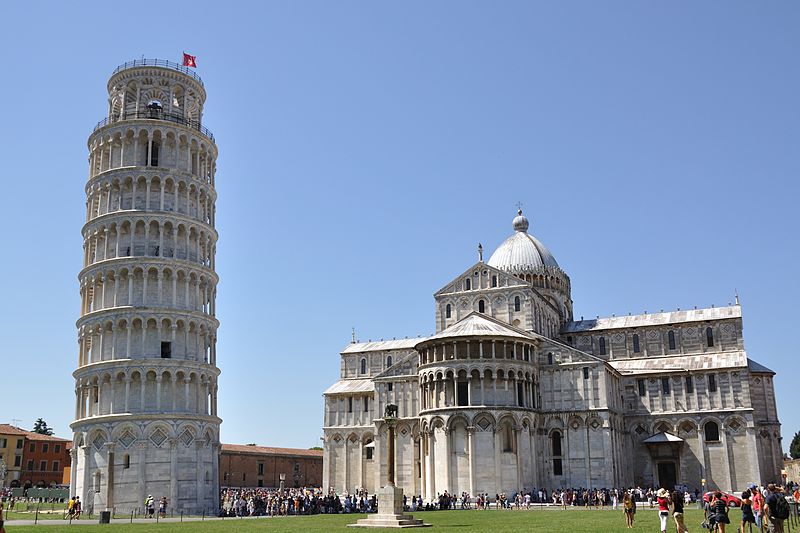
Piazza dei Miracoli
An important naval base in Roman times and one of the four powerful maritime republics between to 10th and 13th century, Pisa is now a town renowned for its art and architectural treasures. Birthplace of Galileo Galilei and seat of a prestigious university, founded in 1343, Pisa is distinguished above all by the grandiose group of buildings in the Piazza dei Miracoli (Square of Miracles). The world-famous leaning tower, the cathedral, baptistery and the monumental cemetery make it one of Italy's favourite tourist attractions. The Leaning Tower of Pisa is undoubtedly one of the most famous and beloved monuments in the world. From 1173 (when its construction started) up to the present, the Tower has been the object of very special attention, both because of its dramatic lean, and its beauty. Besides the tower, Pisa has other significant sights. Highlights are the Duomo, the Cathedral of Pisa, which is famed for its Romanesque panels depicting the life of Christ, the Museo Nazionale di San Matteo that contains many other dramatic examples of Romanesque and Gothic art.
The Square of Miracles
Standing in a large green expanse, Piazza del Duomo (Square of Miracles) houses a group of monuments known the world over. These four masterpieces of medieval architecture – the cathedral, the baptistery, the campanile (the 'Leaning Tower') and the cemetery – had a great influence on monumental art in Italy from the 11th to the 14th century.
Piazza dei Cavalieri
Piazza dei Cavalieri in Pisa used to be piazza delle Sette Vie, the political centre of Pisa and likely the site of the Roman Forum: it was later transformed into the centre of the Order of the Knights of Santo Stefano by Cosimo I de’ Medici, created to defend the Tuscan and Mediterranean coast from Turkish fleets and pirates.
Lungarnos
Pisa, as well as Florence, is crossed by the Arno river. Pisa lungarnos, adorned with wonderful buildings and bridges survived the bombing during the second world war, are the most picturesque and famous places in Pisa, and among the most romantic for sure! Lungarnos are the streets of the city that pass beside the river Arno. They are also important nightlife meeting places for Pisans. The lungarnos of Pisa inspired some famous poets and writers such as Lord Byron and P.B. Shelley.
Church of S. Maria della Spina
The Church, founded in 1230 was once named S. Maria del Ponte novo (St. Mary’s by the New Bridge) and was a votive oratory. It used to be situated at the foot of the bridge that connected via St. Antonio to via S. Maria. It was given the name it still bears today in 1333, when a thorn from Christ’s Crown of Thorns was donated to the oratory. Throughout the 1300s the Church underwent many changes in its architecture and decoration. It is widely held that the director of works was Lupo di Francesco, an artist who had studied and worked in Giovanni Pisano’s workshop. He took the decorative motifs of pediments and pinnacles from the cathedral fronts at Siena and Orvieto and mixed them with designs typical of funeral monuments.
The medieval walls and the roman ships
These two high-level attractions are new to the town. The ancient walls of Pisa are well preserved for the most part. You can climb over them and have an about 3 km walk with a unique sight on the town. One of the accesses is from the walls behind the Baptistery. The museum of antique boats showcases the best-preserved ancient boats in the world from two millennia ago for a span of some centuries, together with everyday tools which are usually lost in ancient ships but are preserved here because of the fine oxygen-free clay that embedded them.More information on Pisa at Info Discover Pisa.
Sightseeing in Tuscany
Pisa is close to some very important points of interest of Tuscany Region, like the cities of art of Florence, Siena and Lucca and the small villages at the seaside with its attractions.
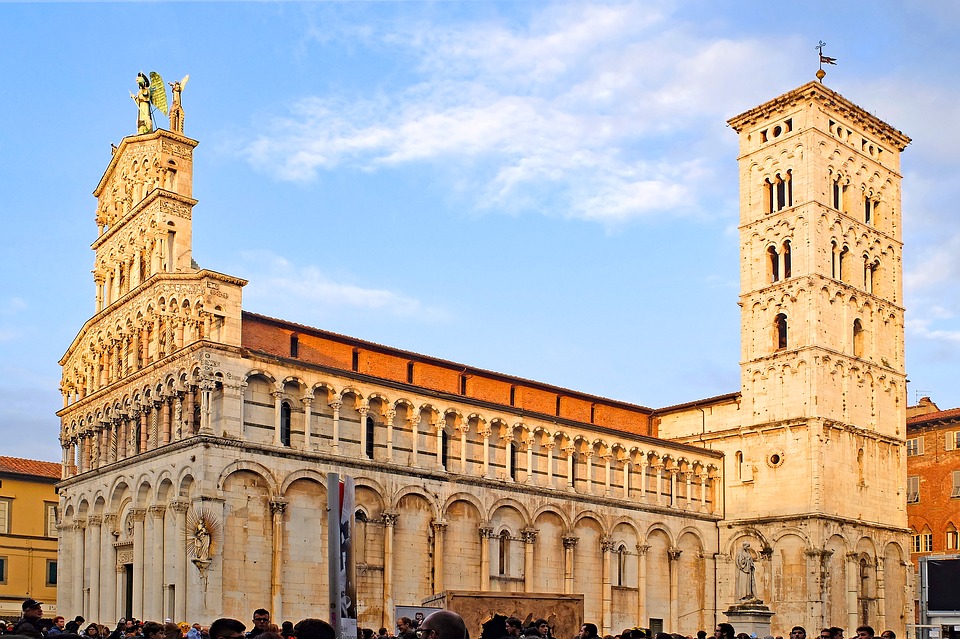
Lucca Duomo

Florence from top

Siena
Lucca (Pisa-Lucca 30 minutes by train, car or bus)
Lucca first impact is with its nearly-intact walls that surround the city, a very impressive touristic attraction. The old town has preserved its Medieval appearance (due to its finely-worked architecture), ancient and numerous churches (Lucca is also called the "city of 100 churches") and, thanks to its many towers, bell towers and monumental Renaissance palaces.
Florence (Pisa-Florence 1 hour by train, car or bus)
Florence is one of the most breathtaking cities in Europe. Celebrating as the birthplace of Renaissance, the city is home to many of its most famous artistic treasures. The city is an open air museum which makes it a popular destination for tourists and students of art and culture. The Uffizi Gallery entirely occupies the first and second floors of the large building constructed between 1560 and 1580 and designed by Giorgio Vasari.
Siena (Pisa-Siena 2 hours by train, car or bus)
Siena is likely Italy's loveliest medieval city, and a trip worth making even if you are in Tuscany for just a few days. Siena's heart is its central piazza known as Il Campo, known worldwide for the famous Palio run here, a horse race run around the piazza twice every summer.
Pisa-seaside from 20 minutes to two hours by train, car or bus
The nearest beaches are in Marina di Pisa and Tirrenia, which you can easily reach by bus. A beautiful sandy beach is La Lecciona, about 10 km north of Pisa, you park your car in the pine wood and walk about 1 km inside the woods; be warned: there is no bar on the beach. If you want to spend 2-3 days at the beach, I suggest you either go south around Baratti, Populonia, San Vincenzo, Cala Violina, or to the Elba isle, which is well connected by boat to the mainland.
Versilia (to the north) hosts luxury beaches and famous discos and clubs, while near Livorno (to the south) you find wonderful reefs. Due to the exposure of the coast to the west, it is likely to see unforgettable sunsets. In these seaside towns you can taste very good fish dishes and ice-creams. Note that at beginning of October you can usually find wonderful sunny days, but you should also be prepared for gloomy rainy ones.
Countryside (starting from half a day)
Tuscany is famous for its views. Rent a car and go around, caring to choose panoramic roads. If you see anything that teases you like a nice village on top of a nearby hill just take a deviation and look around, often you will not be disappointed. This is especially true around Chianti (stop at Castellina, Radda, Gaiole) and Siena (stop at San Miniato). While going to Siena, Certaldo and San Gimignano are worth a stop on their own. The Elba isle is worth a visit, too, both for beach and sightseeing. Also, the weather is usually better there than on mainland.
For further information about Tuscany’s cities of art (Arezzo, Pistoia, Florence, Carrara, Massa, Lucca, Prato, Grosseto, Livorno and Siena) and territories (seaside, countryside) that you can easily reach by train or by car, have a look at Visit Tuscany.
Italy Wonderland
Pisa is the gateway to the most famous Italy’s cities of art: Venice, Milan in the North and Rome and Naples in the South. You can easily reach all of them by car, by train or by plane.

Milan Cathedral

Rome Colosseum

Rialto bridge in Venice
Venice
Elegant, inimitable, exciting and romantic, precious: this is Venice, the gem on any tour of Italy where churches, palazzi, ancient bridges, monuments, campi (squares) and calli (very narrow little streets) confirm its artistic and cultural vitality.
Milan
Milan is the Italian capital city of Fashion and Design. Vogue Fashion Night Out and International Furnishing Accessories Exhibition every year take place in Milan. Many art exhibitions, theatre shows and vernissages are organised in Milan so the city appears very glamorous, lively and amusing.
Rome
Rome is the “Eternal City”, known all over the world. The historical centre of Rome and the Holy See (including the Vatican and the Basilica of St. Paul Outside the Walls) make up one of the 54 Italian sites inserted in UNESCO’s World Heritage List.
Naples
Naples is the regional capital of Campania and the third-largest municipality in Italy after Rome and Milan. Naples' historical city centre is the largest in Europe and a UNESCO World Heritage Site, with a wide range of culturally and historically significant sites nearby, including the Palace of Caserta and the Roman ruins of Pompeii and Herculaneum.








